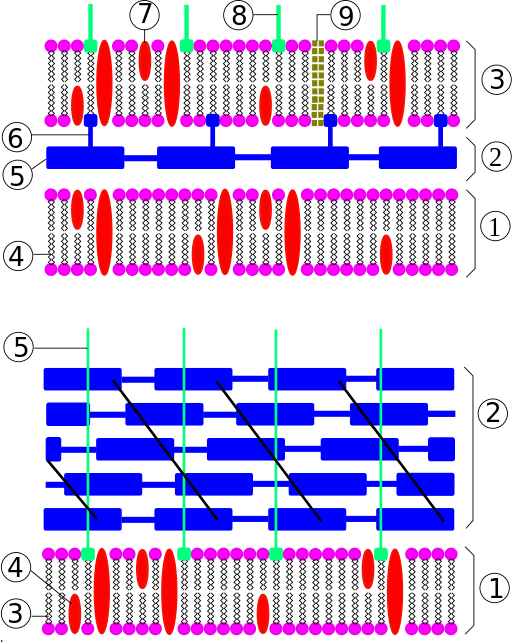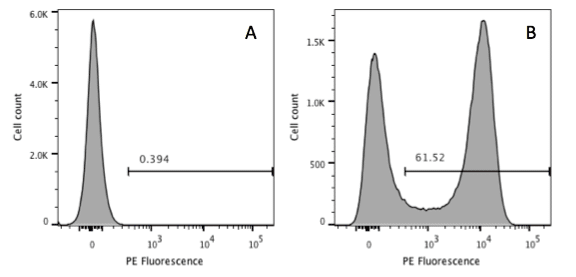Improving the Expression of Insoluble and Inactive Proteins Using Osmotic Shock
Discover a better way to improve the expression of your insoluble and inactive proteins using osmotic shock.
Join Us
Sign up for our feature-packed newsletter today to ensure you get the latest expert help and advice to level up your lab work.

Discover a better way to improve the expression of your insoluble and inactive proteins using osmotic shock.

Glucose repression, leaky expression, and arabinose catabolism can all hinder protein expression. This short guide introduces the pBAD promoter and gives you some advice on using it for consistent protein yields for your studies.

Here we take a closer look at plasmid copy number and examine how it can be manipulated in the lab giving you flexibility in your work.

Expressing your protein of interest but not sure if it’s properly folded or struggling with inclusion bodies? Read on to discover advice and tips for battling inclusion bodies and refolding proteins

Whether you’re simply seeking competent E. coli for a transformation experiment or building a panel intended for a whole project, it’s vital that you pick the right strain for your experiment. Find out more in our complete guide to choosing bacterial strains.

Want to use Gateway cloning or having trouble using this technology? Find out how it works and get helpful tips to increase your success.

Using the right affinity tag can make protein purification a breeze. Read more to find out which tag is right for you.

We are all familiar with bacterial cell lines as a means for protein expression and purification. But can you do the same with eukaryotic cell lines? Read on to learn some helpful tips and considerations when needing to get your hands on some eukaryotic protein.

Are your cell membranes more of a hindrance than a help? Struggling to sneak your DNA inside? Why not break out and take your expression or metabolism studies cell-free. Find out the what, how and why of cell-free systems.

Does the term “ultracentrifuge” make your heart begin to race? Fear not! This article will provide you with tried and true tips on how to handle this piece of machinery like a boss.

Cell Biology is entering the Age of Light with a spectrum of new optogenetics tools available to control protein function using light. Once the remit of neuroscientists [1], the past decade has yielded a bounty of novel light-controllable domains that are now being leveraged to illuminate the dark corners of basic cell biology [2,3]. The…

In my previous article I discussed steps you can implement to ensure that a sample is ready for cell sorting. But now it’s time to make sure the sort worked. Here are a few sorting checks and measures to ensure that all’s well that ends well. Post-sorting Checks and Measures Re-evaluate Your Catch Tubes Sorting…

The first thing one might notice when working with metallo-proteins is that they offer unique, colorful reactions. These colorful reactions are based not only on the metal, but the ligand, or coordinating molecules. Approximately 80% of proteins contain inorganic cofactors like iron (Fe) and copper (Cu) metals necessary to catalyze a reaction. Understanding how these…

So, you have successfully cloned your gene of interest and are eager to purify buckets of protein. No matter your eventual application—kinetic experiments using a SPR instrument, structural analysis using X-ray crystallography, or any other experiment—you’ll need to express your protein first. Now, it’s time to put your expression plasmid into E. coli and get…

How do you pick which antibody you should use in your assay? If you’re starting a new assay and need an antibody for the job, then selecting a new antibody from the plethora available could be high up on your to-do list.

Do you use biotinylated secondary antibodies in your immunohistochemistry? You could use polymers instead. They are a great time-saving reagent.

Plants are just not green gods—they can be more. You can cost-effectively express your recombinant complex proteins in a plant system. More interestingly, plants are ideal systems for producing functional monoclonal antibodies, enzymes, and vaccine components! They can also be used for protein localization studies. To save time, you can transiently express your protein using…

In this article I will not talk about ‘wild’ proteases, which destroy cellular proteins in your lysates like wolves destroy sheep. Instead, I’ll be talking about the shepherd dog proteases—purified, tame and useful to digest proteins your research. In Protein Research and Crystallization Several programs can predict your protein domains. However, we wet biologists know…

While many scientists are methodical and precise, some of us like to live on the edge. Read a protocol all the way through? No thanks, I’ll take my chances and guess what concentration of HCl I should use. Label my tubes with the correct content? Puh-lease – it’s much more exciting deducing which is which…

When you think of microbes what comes to mind? Moldy bread, Penicillin and antibiotics? Vaccines? Fermented food, like yogurt and kombucha? And the latest Probiotics health craze? How about antibody production for immune therapy? Maybe not so much, but you should know that the use of microbes is wide and ever growing. Now researchers are finding…

Put in the time now to optimize protein solubility so you don’t have to suffer later! With this in mind, here are some considerations and tips for selecting the optimal conditions for recombinant protein expression and purification.

To isolate your protein, you are going to need to tag it with something that will allow you to fish it out of the bacterial protein soup. This is where transition metals can help you out!

In the sci-fi novel Terminal World by Alistair Reynolds, a planet consists of zones with defined characteristics of matter interactions on a subatomic level. These conditions permit different levels of technology sophistication in various zones. For example, in the “Steamville zone” nothing more complicated than steam engines works – electronic schemes fuse irreversibly. Something like…

Here’s a tip that you may find useful if you are expressing proteins in E.coli using a lac promoter-based expression system, e.g. pET, in LB medium (L-broth). Lac expression systems are typically induced in the lab using IPTG (isopropyl-beta-D-thiogalacto- pyranoside), which is a non- hydrolyzable analog of lactose, the natural inducer of the lac operon….

While overexpressing a gene of interest can provide a look into its role in a cell, sometimes it is necessary to control the expression of a gene. You may want to dictate the timing of the protein’s expression or lower its expression level to adequately understand its function. This is particularly relevant when studying genes that…

As biochemists, we routinely run SDS-PAGE to analyze our proteins. Imagine the time and effort you are going to save when you can run every gel to perfection.

Retroviral transduction is becoming a popular choice for gene delivery into mammalian cells and has multiple advantages over other techniques. If you decide to start work on this useful technique, here is how you can go about it: Step 0: Obtain permission First and foremost, do you have the permission, authorization, and training to work…

As a research intern this summer, part of my project included expressing and purifying a few proteins of interest. Two out of the three proteins posed no problem, but the third caused me to spend an agonizingly long amount of time– setting up new secondary cultures everyday, waiting for them to grow, forgetting to induce…

Western blotting uses electrophoresis and antibody-epitope affinity to give a semi-quantitative and (theoretically) clear measure of protein abundance. It’s a long procedure, filled with many steps—and even more room for error. Learning to troubleshoot certain problems is incredibly important for continued success with this technique. So what do you do when your final imaged product…

Producing lentiviral or retroviral vectors is theoretically fairly straightforward. However, anyone new to viral vector work is usually confronted with vast amounts of confusing information. It seems that anyone who has ever made a lentivirus has their own protocols and is adamant that their method is the best one to follow. In reality, there are…

What do you use if antibodies are too large for super resolution microscopy? Aptamers. These are small affinity reagents (~ 2 nm!) that interact with their target in the same way as an antibody, but without the hefty backbone attached.

In the previous installment of this series on western blotting, we addressed potential sources of error when your final product is completely bare. But alternatively, what do you do when too much background is the problem? You may have beautiful bands of interest—but if there is a bunch of non-specific binding, your quantification and data…

As a protein biochemist and a Ph.D. student, I was given the task to express a eukaryotic protein in a bacterial system. And to say that I was having a hard time would be an understatement. It took me many PCRs, cloning and transformations to get to the right construct that would eventually express the desired…

In many biological experiments the question that a researcher wants to ask is – ‘do some or all of my cells express a particular protein?’ There are many ways of doing this, which you will be familiar with e.g. Western blotting, immunoprecipitation, microscopic examination of stained cells and even mass spectrometry. Using Flow Cytometry to…

Problems with expressing your gene? One of the potential stumbling blocks in heterologous gene expression is incompatible codon usage. Every amino acid can be encoded by more than one codon, and for every amino acid each organism has a favorite codon that it tends to use more often than the others. The availability of tRNA…

The eBook with top tips from our Researcher community.